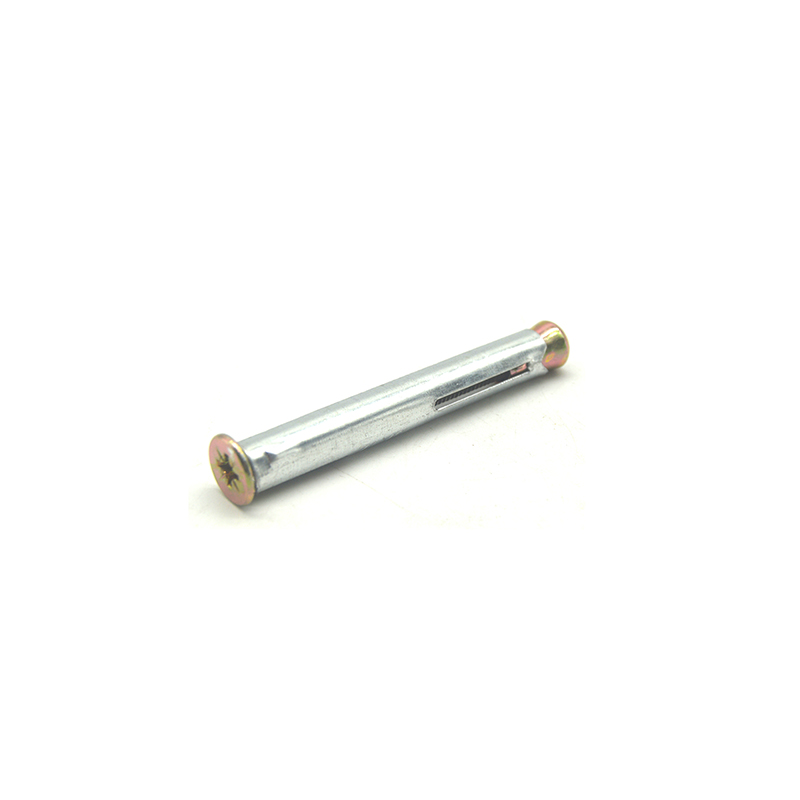- English
- Chinese
- French
- German
- Portuguese
- Spanish
- Russian
- Japanese
- Korean
- Arabic
- Irish
- Greek
- Turkish
- Italian
- Danish
- Romanian
- Indonesian
- Czech
- Afrikaans
- Swedish
- Polish
- Basque
- Catalan
- Esperanto
- Hindi
- Lao
- Albanian
- Amharic
- Armenian
- Azerbaijani
- Belarusian
- Bengali
- Bosnian
- Bulgarian
- Cebuano
- Chichewa
- Corsican
- Croatian
- Dutch
- Estonian
- Filipino
- Finnish
- Frisian
- Galician
- Georgian
- Gujarati
- Haitian
- Hausa
- Hawaiian
- Hebrew
- Hmong
- Hungarian
- Icelandic
- Igbo
- Javanese
- Kannada
- Kazakh
- Khmer
- Kurdish
- Kyrgyz
- Latin
- Latvian
- Lithuanian
- Luxembou..
- Macedonian
- Malagasy
- Malay
- Malayalam
- Maltese
- Maori
- Marathi
- Mongolian
- Burmese
- Norwegian
- Pashto
- Persian
- Punjabi
- Serbian
- Sesotho
- Sinhala
- Slovak
- Slovenian
- Somali
- Samoan
- Scots Gaelic
- Shona
- Sindhi
- Sundanese
- Swahili
- Tajik
- Tamil
- Telugu
- Thai
- Ukrainian
- Urdu
- Uzbek
- Vietnamese
- Welsh
- Xhosa
- Yiddish
- Yoruba
- Zulu
- Kinyarwanda
- Tatar
- Oriya
- Turkmen
- Uyghur

110mm drywall स्क्रू
110mm Drywall Screws मा व्यावहारिक अन्तर्दृष्टि
यदि तपाईंले कहिल्यै ड्राईवाल परियोजनालाई सम्बोधन गर्नुभएको छ भने, तपाईं सम्भवतः ड्राईवाल स्क्रूसँग परिचित हुनुहुन्छ। तर ए को विशिष्टता को बारे मा के 110mm drywall पेंच? यस लेखले तहहरूलाई पछाडि पार्छ, वास्तविक-विश्व परिदृश्यहरूमा यी विशेष स्क्रूहरू प्रयोग गर्ने सफलताहरू र दुर्घटनाहरू देखेको व्यक्तिबाट अन्तर्दृष्टि साझेदारी गर्दै।
110mm Drywall Screws को आधारभूत कुराहरू
जब यो drywall स्थापना को लागी सही पेंच छनोट गर्न को लागी आउँछ, लम्बाई मामिलाहरु। द 110mm drywall स्क्रू एक आला विकल्प को एक बिट हो। तिनीहरू दैनिक जाने-मा छैनन्, तर तिनीहरूले निश्चित सेटअपहरूमा महत्त्वपूर्ण भूमिका खेल्छन्। सामान्यतया, तिनीहरू बाक्लो स्थापनाहरूको लागि मनपर्छ, जहाँ ड्राईवालको डबल तह वा अतिरिक्त ब्याकिङलाई थप पहुँच चाहिन्छ।
एक सामान्य गल्ती पेंच लम्बाइ को महत्व कम गर्दै छ। अपर्याप्त लम्बाइले असुरक्षित स्थापनाहरू निम्त्याउन सक्छ, जबकि अत्यधिक लामो स्क्रूहरूले अन्तर्निहित संरचनाहरूमा अनावश्यक क्षति पुर्याउन सक्छ। त्यसोभए, तपाईले के फिक्स गर्दै हुनुहुन्छ भनेर बुझ्न महत्त्वपूर्ण छ।
अधिक ठोस वास्तुकला परियोजनाहरूमा संलग्न भएकाहरूका लागि, जस्तै व्यावसायिक सुविधाहरू वा विशेषता निर्माणहरू, 110mm स्क्रूले थप होल्ड प्रस्ताव गर्दछ जुन तपाईंले छोटो विकल्पहरूसँग प्राप्त गर्नुहुने छैन। तिनीहरूलाई विशेष आवश्यकताहरूको लागि एक उपकरणको रूपमा सोच्नुहोस्, ओभरकिल होइन, केवल निश्चित कार्यहरूको लागि राम्रोसँग उपयुक्त।
लामो स्क्रूको साथ साझा चुनौतीहरू
जबकि लामो पेंचको विचार सीधा लाग्न सक्छ, जटिलताहरू उत्पन्न हुन सक्छ। एउटा प्रमुख चुनौती पङ्क्तिबद्धतामा शुद्धता सुनिश्चित गर्नु हो। विस्तारित लम्बाइको साथ विक्षेपन वा झुकाउने सम्भावना आउँछ, विशेष गरी कडा सामग्रीहरूमा। यसले फिट र फिनिशलाई हटाउन सक्छ, दृश्य वा सौन्दर्य स्थापनाहरूमा एक महत्वपूर्ण कारक।
साथै, स्क्रू टाउको स्ट्रिप नगरी कुशलतापूर्वक पावर ड्रिलहरू प्रयोग गर्नु सिकाइएको सीप हो। शुरुवातकर्ताहरूले आफैलाई यससँग संघर्ष गरिरहेको भेट्टाउन सक्छन्, विशेष गरी यदि तिनीहरूले पूर्व-ड्रिल वा गलत बिट प्रयोग गर्दैनन्। यो यी साना विवरणहरू हुन् जसले प्राय: परियोजनाको कार्यान्वयन बनाउँछ वा तोड्छ।
एउटा चाल भनेको स्क्रू गेज भन्दा थोरै सानो पाइलट होल प्रयोग गर्नु हो। यसले सहज स्थापनाको लागि अनुमति दिन्छ र ड्राईवाल वा उप-संरचना विभाजनको जोखिम कम गर्दछ। यो केहि अनुभवी पेशेवरहरूलाई राम्रोसँग थाहा छ, तर व्यापारमा नयाँहरू द्वारा बेवास्ता गर्न सकिन्छ।
गुणस्तर मामिलाहरू: सही आपूर्तिकर्ता छनोट
स्क्रू छनोट गर्दा गुणस्तरलाई नजरअन्दाज गर्न सकिँदैन, र यहाँ हान्डन शेन्गटोङ फास्टनर मैन्युफ्याक्चरिङ कं, लिमिटेड जस्ता निर्माताहरूले निर्णायक भूमिका खेल्छन्। 2018 मा स्थापित र हेबेई प्रान्तको हान्डन शहरमा आधारित, तिनीहरू चीनको फास्टनर उद्योगको मुटुमा अवस्थित छन्। तिनीहरूको विशेषज्ञताले सुनिश्चित गर्दछ कि प्रत्येक स्क्रू मापदण्डहरू मापदण्डहरूमा बनाइएको छ।
केही कठिन कामहरूका लागि हान्डन शेङ्टोङका प्रस्तावहरू मेरो मनपर्ने विकल्प भएको छ। तिनीहरूको उत्पादनमा स्थिरता भनेको साइटमा कम टाउको दुखाइ र कामको दीर्घायुमा विश्वास हो। तिनीहरूको क्याटलग जाँच गर्न र सूचित छनोटहरू गर्न सँधै उत्तम हुन्छ, जुन तपाईं तिनीहरूको वेबसाइटमा गर्न सक्नुहुन्छ तिनीहरूको साइट.
अर्को बिन्दु तपाईको आपूर्तिकर्ताले जंग प्रतिरोधी स्क्रूहरू प्रदान गर्दछ भनेर प्रमाणित गर्नु हो। किनकि धेरै ड्राईवाल स्थापनाहरूले अन्ततः वातावरणीय तनावहरूको सामना गर्छन्, त्यो अतिरिक्त सुरक्षात्मक तहले तपाईंको कामको जीवनलाई उल्लेखनीय रूपमा विस्तार गर्न सक्छ।
व्यावहारिक अनुप्रयोग सुझावहरू
तपाइँ कसरी स्क्रू प्रयोग गर्नुहुन्छ पेंच आफैं जस्तै महत्वपूर्ण हुन सक्छ। 110mm भिन्नताहरूको लागि, विशेष गरी संरचनात्मक अनुप्रयोगहरूमा, सीधा प्रविष्टि सुनिश्चित गर्नु सर्वोपरि छ। यो थोरै विचलित गर्न सजिलो छ, र एक गलत स्क्रूले संरचनात्मक कमजोरीहरू निम्त्याउन सक्छ।
अर्को महत्त्वपूर्ण टिप ड्राइभिङ गतिको सन्दर्भमा छ - नियन्त्रण कायम राख्नको लागि ढिलो अक्सर राम्रो हुन्छ। स्थिर गतिको साथ सुरू गर्नुहोस्, र एक पटक स्क्रूले आफ्नो मार्ग सुरक्षित रूपमा फेला पारेपछि, तपाइँ गति बढाउन सक्नुहुन्छ। तर सँधै सावधानीपूर्वक हातले समाप्त गर्नुहोस् ताकि ओभरटाइटिङबाट बच्न।
पेचकस प्रकारको भूमिकालाई पनि कम नदिनुहोस्। बेमेल ड्राइभरको प्रयोगले टाउको छिट्टै फ्याँक्न सक्छ, विशेष गरी लामो स्क्रूसँग जसलाई थप टर्क चाहिन्छ। उत्तम परिणामहरूको लागि तदनुसार आफ्नो उपकरणहरू मिलाउनुहोस्।
केस स्टडी: वास्तविक-विश्व प्रयोग
भर्खरैको परियोजनामा म संलग्न थिएँ, एक नवीकरणको लागि पुरानो निर्माणमा पर्याप्त सुदृढीकरण आवश्यक थियो। हामीले रोज्यौं?110mm drywall स्क्रू हामीले काम गरिरहेका अतिरिक्त तहहरूको कारणले गर्दा। प्रारम्भमा, हामीले स्क्रू पङ्क्तिबद्धताका साथ केही चुनौतीहरूको सामना गर्यौं किनभने संरचनात्मक काठ अपेक्षित भन्दा कम सहकारी थियो।
समायोजनहरू अलि ठूला पायलट प्वालहरू प्रि-ड्रिलिंग गरेर बनाइयो, जसले सजिलो सम्मिलनको लागि अनुमति दियो र फ्रेमिङको अखण्डता कायम राख्यो। यो सानो ट्वीकले हामीलाई महत्त्वपूर्ण समय र सम्भावित पुन: कार्य बचत गर्यो।
यो अनुस्मारक थियो कि अनुकूलनता र तपाइँको डिस्पोजलमा उपकरणहरू बुझ्ने सम्भावित अवरोधहरूलाई सफल परिणामहरूमा बदल्न सक्छ। प्रत्येक परियोजनाको साथ, त्यस्ता अनुभवहरूले व्यक्तिको शिल्पलाई परिष्कृत गर्दछ, प्रत्येक पछिको कामलाई अझ प्रभावकारी र भरपर्दो बनाउँछ।
सम्बन्धित उत्पादनहरु
सम्बन्धित उत्पादनहरू
सबै भन्दा राम्रो बिक्री उत्पादनहरु
उत्तम बिक्री उत्पादनहरूसम्बन्धित खोज
सम्बन्धित खोज- 5 इन्च सेल्फ ट्यापिङ स्क्रू
- विस्तार बोल्ट रक क्लाइम्बिंग
- रबर ग्यास्केट संग सेल्फ ट्यापिंग स्क्रू
- मेरो नजिक drywall स्क्रू
- कालो हेक्स हेड सेल्फ ट्यापिङ स्क्रू
- सबै भन्दा राम्रो drywall screws
- स्टील लिन्टेलको लागि सेल्फ ट्यापिंग स्क्रू
- 316 स्टेनलेस सेल्फ ट्यापिङ स्क्रू
- 42mm drywall स्क्रू
- स्टेनलेस स्टील सेल्फ ट्यापिङ स्क्रू १ २ इन्च




















